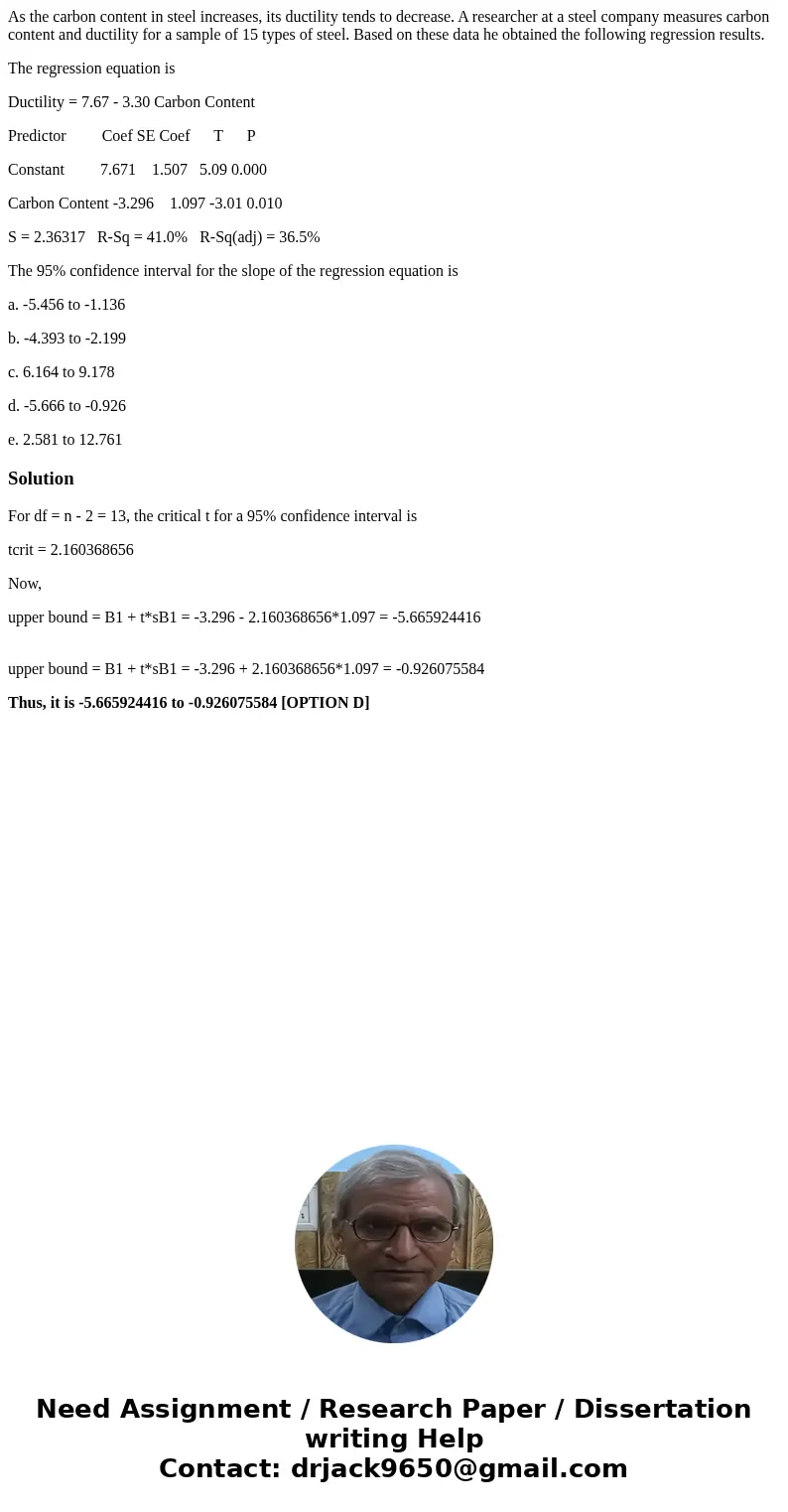As the carbon content in steel increases its ductility tends
As the carbon content in steel increases, its ductility tends to decrease. A researcher at a steel company measures carbon content and ductility for a sample of 15 types of steel. Based on these data he obtained the following regression results.
The regression equation is
Ductility = 7.67 - 3.30 Carbon Content
Predictor Coef SE Coef T P
Constant 7.671 1.507 5.09 0.000
Carbon Content -3.296 1.097 -3.01 0.010
S = 2.36317 R-Sq = 41.0% R-Sq(adj) = 36.5%
The 95% confidence interval for the slope of the regression equation is
a. -5.456 to -1.136
b. -4.393 to -2.199
c. 6.164 to 9.178
d. -5.666 to -0.926
e. 2.581 to 12.761
Solution
For df = n - 2 = 13, the critical t for a 95% confidence interval is
tcrit = 2.160368656
Now,
upper bound = B1 + t*sB1 = -3.296 - 2.160368656*1.097 = -5.665924416
upper bound = B1 + t*sB1 = -3.296 + 2.160368656*1.097 = -0.926075584
Thus, it is -5.665924416 to -0.926075584 [OPTION D]

 Homework Sourse
Homework Sourse